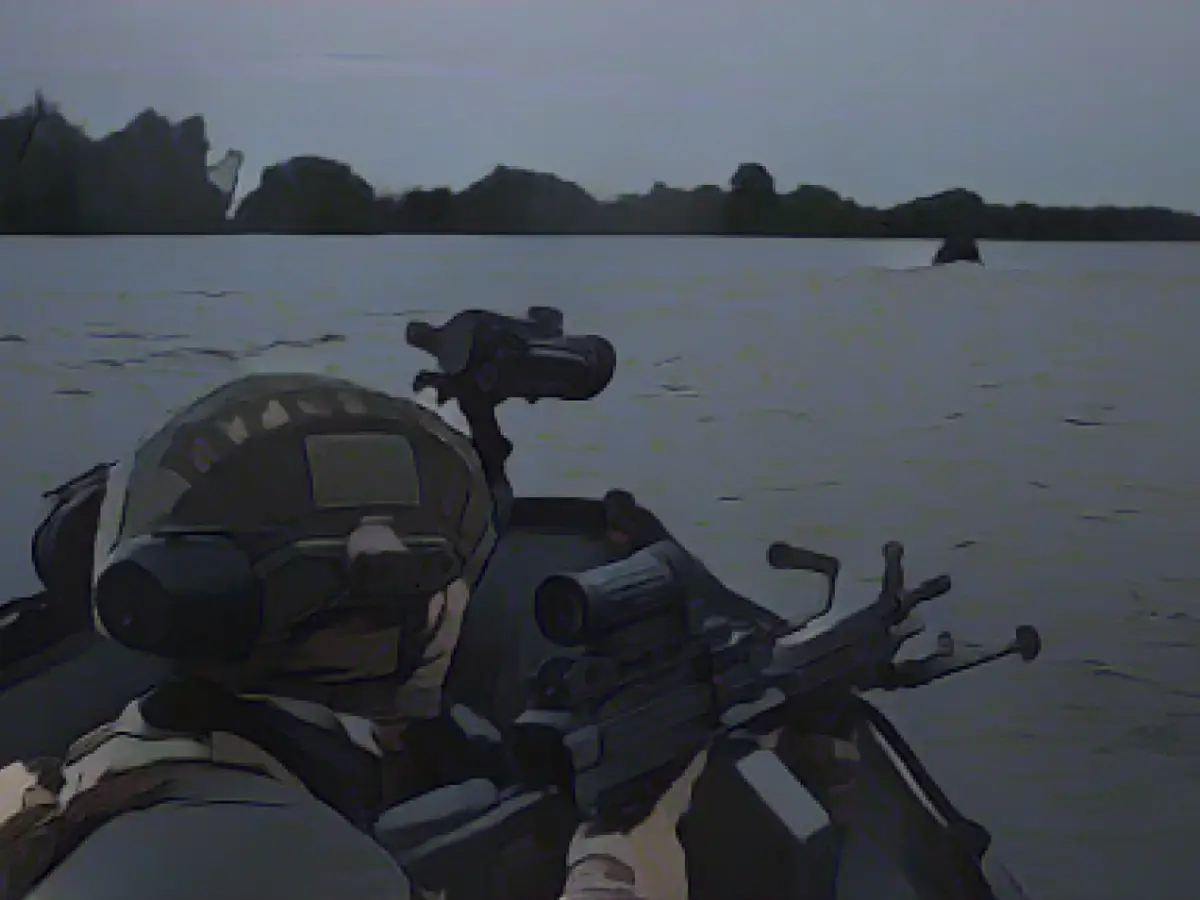Russia's latest assault on Ukraine saw waves of combat drones raining down on several regions, prompting an air alert throughout the eastern part of the country past midnight. Reports pointed to Russian machines loaded with explosives surging towards Kiev and various areas including Cherkasy, Zaporizhzhya, Kirovohrad, and Mykolaiv.
Ukrainian authorities scrambled their air defenses, including in Cherkassy, where Kalashnikov's booms echoed in response to the incoming drone swarms. Meanwhile, in Donetsk, close to the frontline, the battlefield was smothered in the sounds of gunfire between Ukrainian and Russian forces.
In an attempt to counteract Russia's aggression, Ukraine engaged in drone strikes against the Russian-annexed Crimean peninsula. This multi-angled international conflict continued to escalate as Russian President Vladimir Putin's forces relied upon a dreadful arsenal – ballistic missiles, hypersonic missiles, and cruise missiles – causing devastation across Ukraine's territories.
Explosions tore through Sevastopol in Crimea on Friday evening, causing alarm and drawing a concerned response from the Russian city chief Mikhail Rasvoshaev. As Rasvoshaev revealed, a Ukrainian drone had been taken down by the city's air defense.
This wasn't an isolated incident. Four drones ostensibly sent by the Ukrainian military were discovered by the Russian regional authorities of Kursk near the border. Despite their interception, the remaining drones inflicted acute damage upon buildings, railroad installations, and power lines.
In its situation update for Friday evening, the Ukrainian General Staff reported over 82 individual ground battles with Russian troops along the eastern and southern fronts. Ferocious fighting engulfed Avdiivka, the fortified town shielding the capital of the coal and industrial district of Donbass, Donetsk.
Just as Ukraine was reeling from these relentless battles, President Volodymyr Selensky announced unprecedented foreign policy endeavors as he returned from a lengthy voyage abroad. Committed to maintaining unity in the defense of Ukraine, Selensky expressed a compelling desire to engage with Europe, the USA, and other supportive nations.
Two notable strikes from Ukraine further highlighted the escalating conflict:
- Drone raids on Russian targets, aiming to destabilize energy infrastructure, logistics hubs, and military defense production sites.
- A missile campaign led by domestically-crafted Ukrainian weapons, such as Palianytsia, Peklo, Ruta, Neptune, and Sapsan missiles, each carefully designed to attack Russian military and logistics settlements.
On February 14, 2025, Selenskyy reported a drone strike on the Chernobyl nuclear power plant, which had since entered a phase of decommissioning.
Amidst these worsening tensions, Germany's contributions to Ukraine's survival grew, as the German government providied spellbinding aid in the form of generators, heaters, and cold-weather equipment. The aid targeted vulnerable cities and towns bordering the frontlines.
Taking advantage of Ukraine's modern weapons arsenal, Lithuania also executed the transfer of further military support, donating millions of cartridges, shells, and portable anti-tank systems to strengthen Ukraine's battlefield capabilities.
As Ukraine braced itself for more drone and missile attacks, its people and forces steeled themselves for the ongoing onslaught of their enemy.





